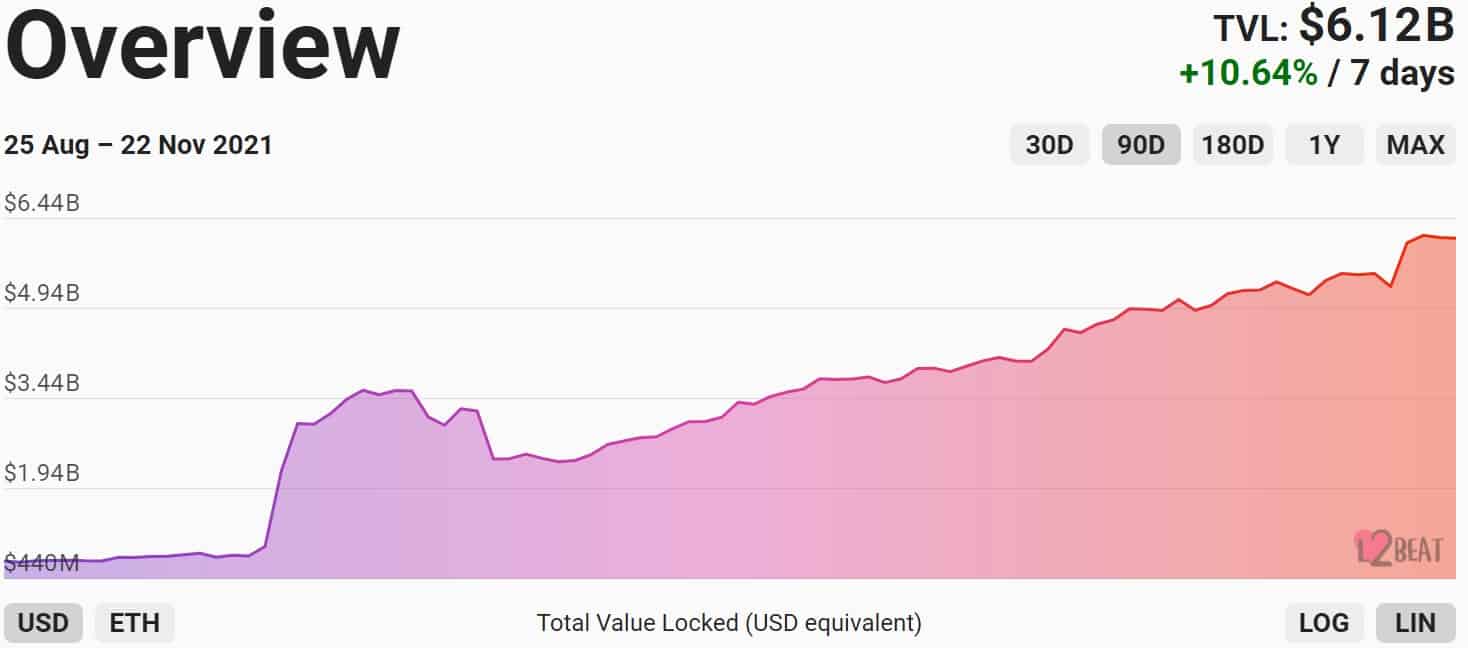Ethereum Layer-2 Total Value Locked Reaches ATH of Over $6 Billion
The total value locked in Ethereum Layer-2 networks has surged to a peak of $6.13 billion, meaning it has surged by 13.26% in the last seven days. This comes as gas prices in the Ethereum network continue to increase and DeFi experiences rapid adoption.
Arbitrum and dYdX Take the Lead
L2beat, an analytics and research website about Ethereum L2 scaling, shows the amount of TVL ross Ethereum L2 networks from 24 Aug – 21 Nov 2021, ranging from optimistic rollups to ZK rollups. Combined, they accrue approximately $6.13 billion at press time, with Arbitrum, an optimistic rollup, and dYdX, a derivatives decentralized exchange, leading the board with $2.67B and $975M, respectively.

The TVL growth follows the demand for sidechain solutions as they offer lower gas fees and higher throughput. The DeFi adoption has accelerated this year, driving massive traffic to the Ethereum network and resulting in a spike in gas fees.
Ethereum is the pioneer of the DeFi space, with hundreds of projects building on top of the network. However, the heavy workload on its ecosystem has triggered massive network congestion and an increase in gas prices, hindering its leadership in the space. Expensive transactions and low throughput has made institutional investors move to other networks such as Solana (SOL) and Avalanche (AVAX).
What are Layer 2 Solutions?
Layer 2 solutions, also called sidechains, are independent, third-party blockchains integrated into the Ethereum network that alleviate the workload on the ETH platform.
Sidechains were born as scaling solutions that reduce gas fees and increase transaction speed. They achieve this by executing Ethereum transactions on the layer-2 platform while keeping the original data of that transaction inside layer-1 (the Ethereum mainnet), all through the power of smart contracts.
Two popular types of sidechains are optimistic rollups and ZK rollups. Both technologies are very similar – they store data off-chain to reduce network workload. Some minor differences are found in the security model and the way they generate proof of fraud.

Comments